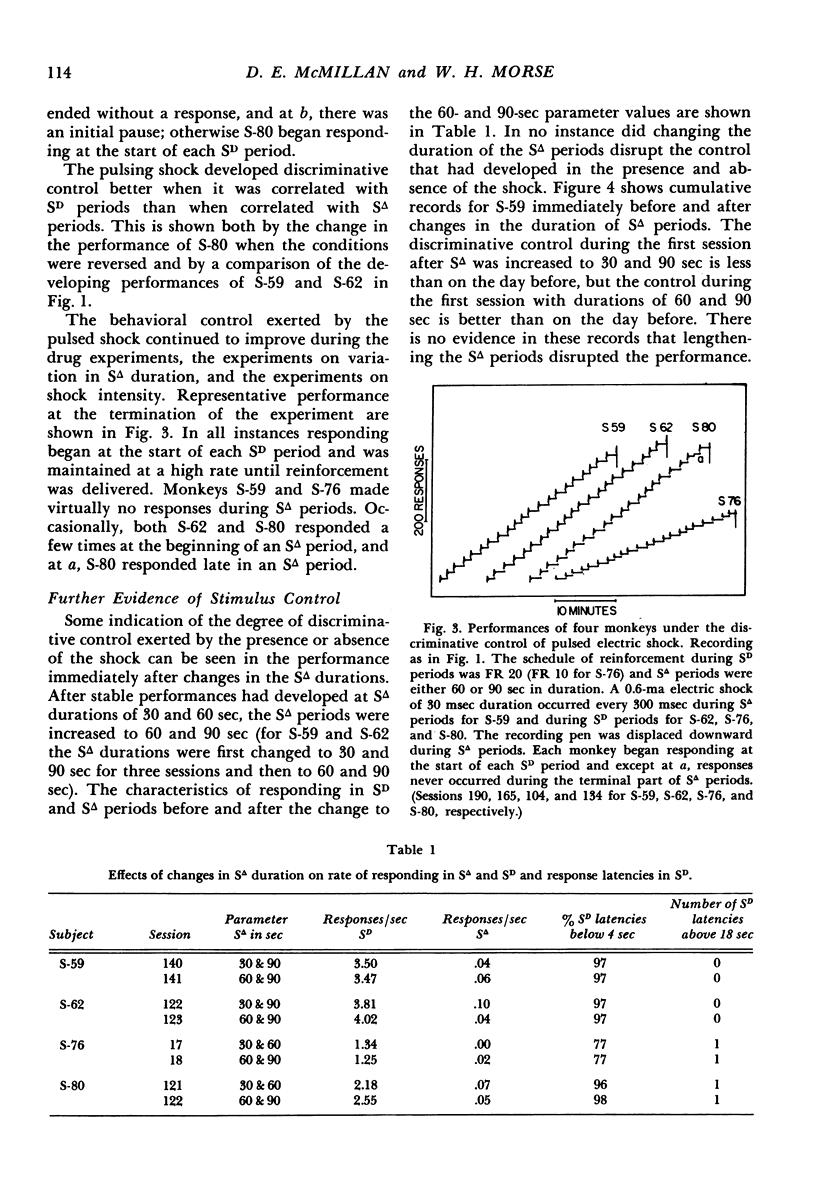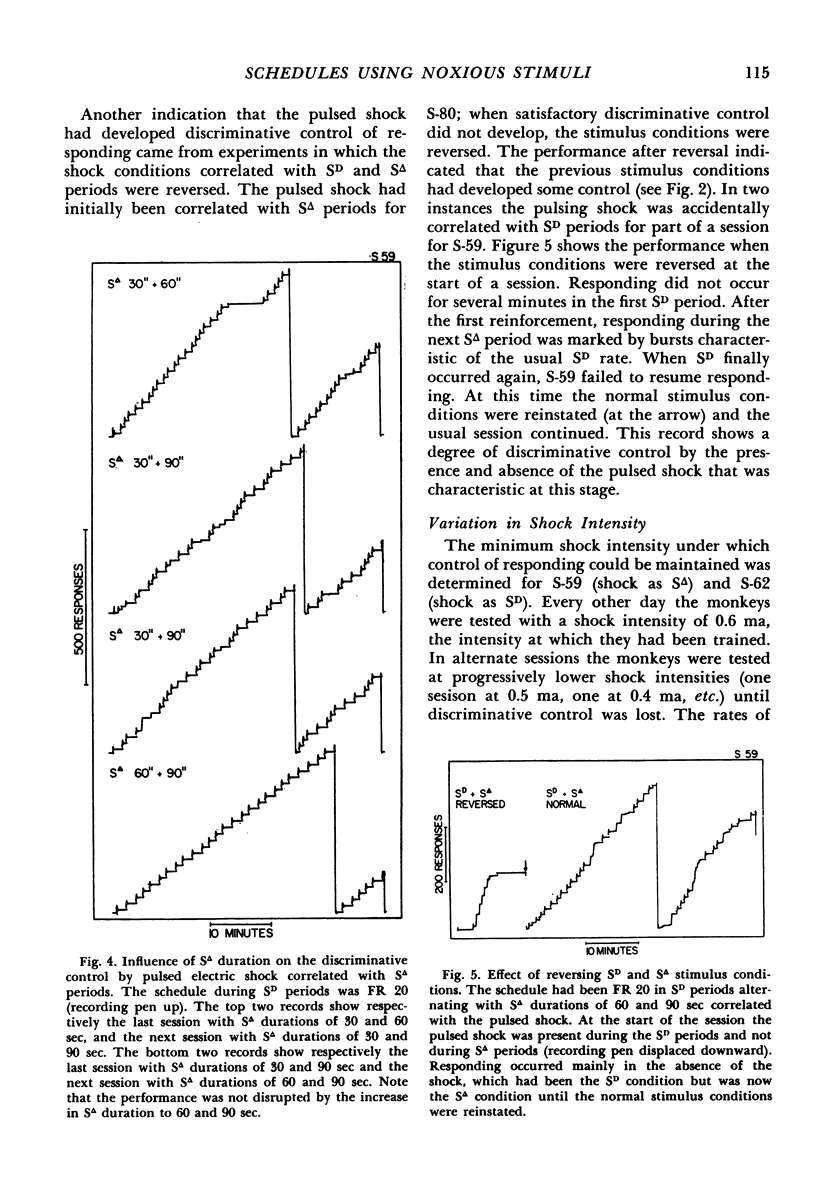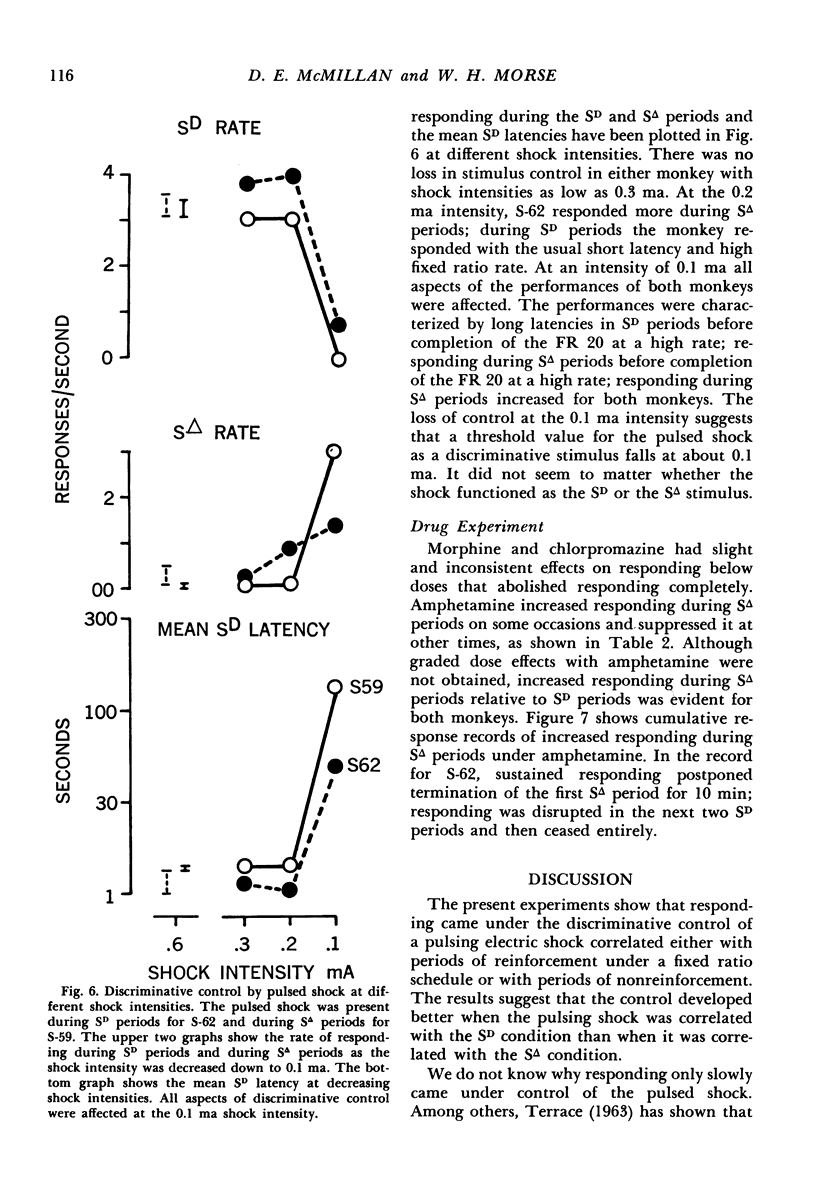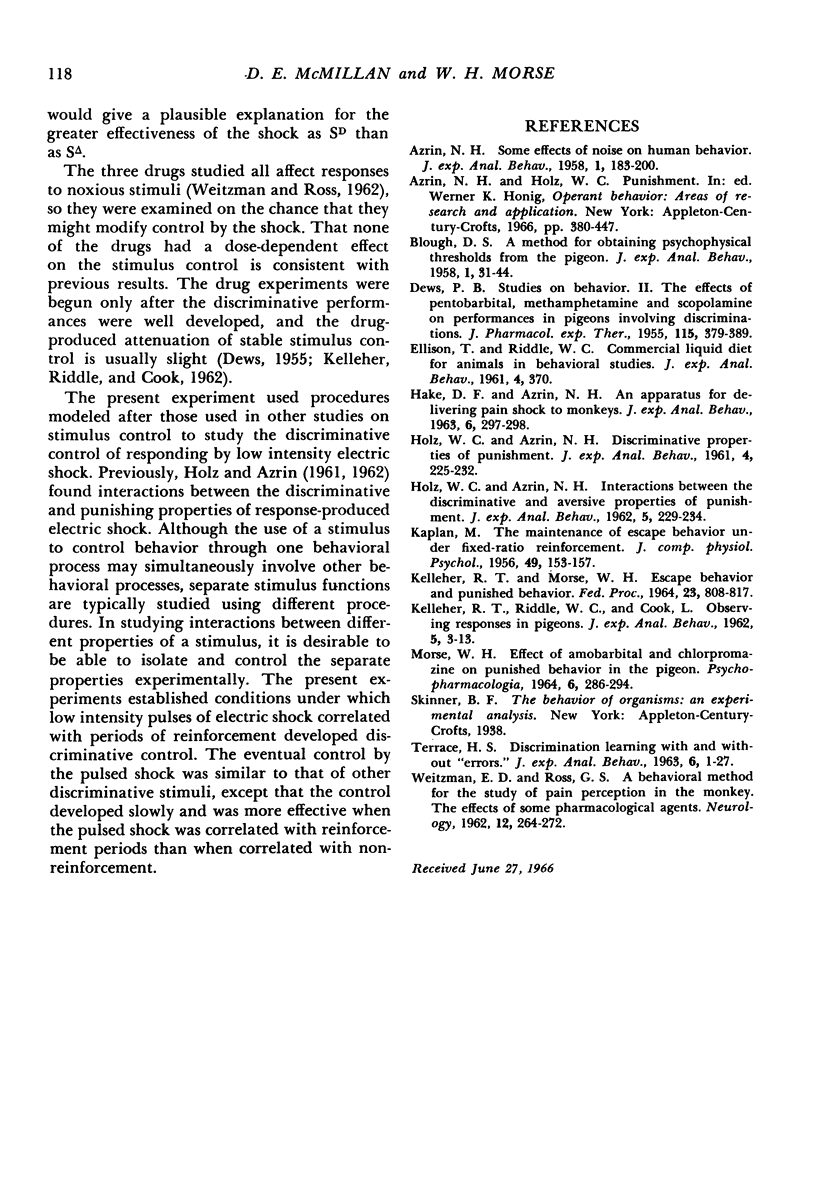Abstract
The presence or absence of pulses of low intensity electric shock was used as a discriminative stimulus to control responding under fixed ratio reinforcement in the squirrel monkey. Initially brief periods of nonreinforcement were lengthened only when discriminative control was evident. Discriminative control was studied by (1) varying the duration of nonreinforcement periods; (2) reversing the stimulus conditions correlated with reinforcement and nonreinforcement periods; and (3) determining the minimum shock intensity necessary to maintain discriminative control. Stimulus control was not reliably affected by d-amphetamine, chlorpromazine, or morphine. The discriminative control by pulses of low intensity electric shock was similar to that by other discriminative stimuli, except that the control developed slowly and was better when the pulsing shock was correlated with reinforcement than when correlated with nonreinforcement.
Full text
PDF









Selected References
These references are in PubMed. This may not be the complete list of references from this article.
- Azrin N. H. Some Effects of Noise on Human Behavior. J Exp Anal Behav. 1958 Apr;1(2):183–200. doi: 10.1901/jeab.1958.1-183. [DOI] [PMC free article] [PubMed] [Google Scholar]
- BLOUGH D. S. A method for obtaining psychophysical thresholds from the pigeon. J Exp Anal Behav. 1958 Jan;1:31–43. doi: 10.1901/jeab.1958.1-31. [DOI] [PMC free article] [PubMed] [Google Scholar]
- DEWS P. B. Studies on behavior. II. The effects of pentobarbital, methamphetamine and scopolamine on performances in pigeons involving discriminations. J Pharmacol Exp Ther. 1955 Dec;115(4):380–389. [PubMed] [Google Scholar]
- ELLISON T., RIDDLE W. C. Commercial liquid diet for animals in behavioral studies. J Exp Anal Behav. 1961 Oct;4:370–370. doi: 10.1901/jeab.1961.4-370. [DOI] [PMC free article] [PubMed] [Google Scholar]
- HAKE D. F., AZRIN N. H. An apparatus for delivering pain shock to monkevs. J Exp Anal Behav. 1963 Apr;6:297–298. doi: 10.1901/jeab.1963.6-297. [DOI] [PMC free article] [PubMed] [Google Scholar]
- HOLZ W. C., AZRIN N. H. Discriminative properties of punishment. J Exp Anal Behav. 1961 Jul;4:225–232. doi: 10.1901/jeab.1961.4-225. [DOI] [PMC free article] [PubMed] [Google Scholar]
- HOLZ W. C., AZRIN N. H. Interactions between the discriminative and aversive properties of punishment. J Exp Anal Behav. 1962 Apr;5:229–234. doi: 10.1901/jeab.1962.5-229. [DOI] [PMC free article] [PubMed] [Google Scholar]
- KAPLAN M. The maintenance of escape behavior under fixed-ratio reinforcement. J Comp Physiol Psychol. 1956 Apr;49(2):153–157. doi: 10.1037/h0048735. [DOI] [PubMed] [Google Scholar]
- KELLEHER R. T., MORSE W. H. ESCAPE BEHAVIOR AND PUNISHED BEHAVIOR. Fed Proc. 1964 Jul-Aug;23:808–817. [PubMed] [Google Scholar]
- KELLEHER R. T., RIDDLE W. C., COOK L. Observing responses in pigeons. J Exp Anal Behav. 1962 Jan;5:3–13. doi: 10.1901/jeab.1962.5-3. [DOI] [PMC free article] [PubMed] [Google Scholar]
- Morse W. H. Effect of amobarbital and chlorpromazine on punished behavior in the pigeon. Psychopharmacologia. 1964 Oct 14;6(4):286–294. doi: 10.1007/BF00413158. [DOI] [PubMed] [Google Scholar]
- TERRACE H. S. Discrimination learning with and without "errors". J Exp Anal Behav. 1963 Jan;6:1–27. doi: 10.1901/jeab.1963.6-1. [DOI] [PMC free article] [PubMed] [Google Scholar]
- WEITZMAN E. D., ROSS G. S. A behavioral method for the study of pain perception in the monkey. The effects of some pharmacological agents. Neurology. 1962 Apr;12:264–272. doi: 10.1212/wnl.12.4.264. [DOI] [PubMed] [Google Scholar]


